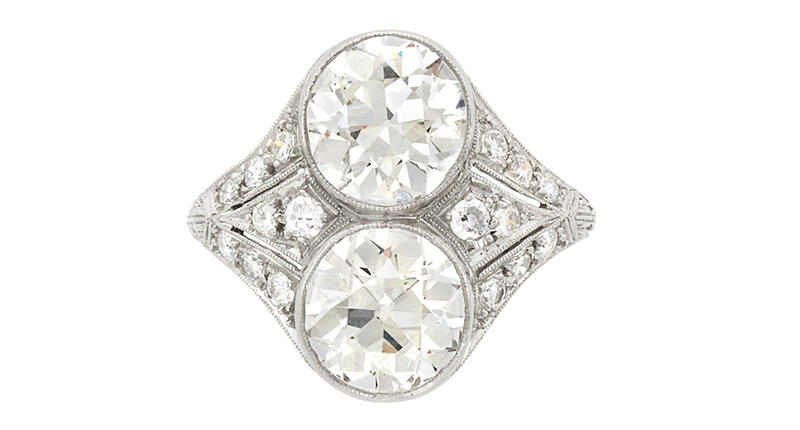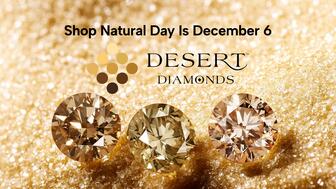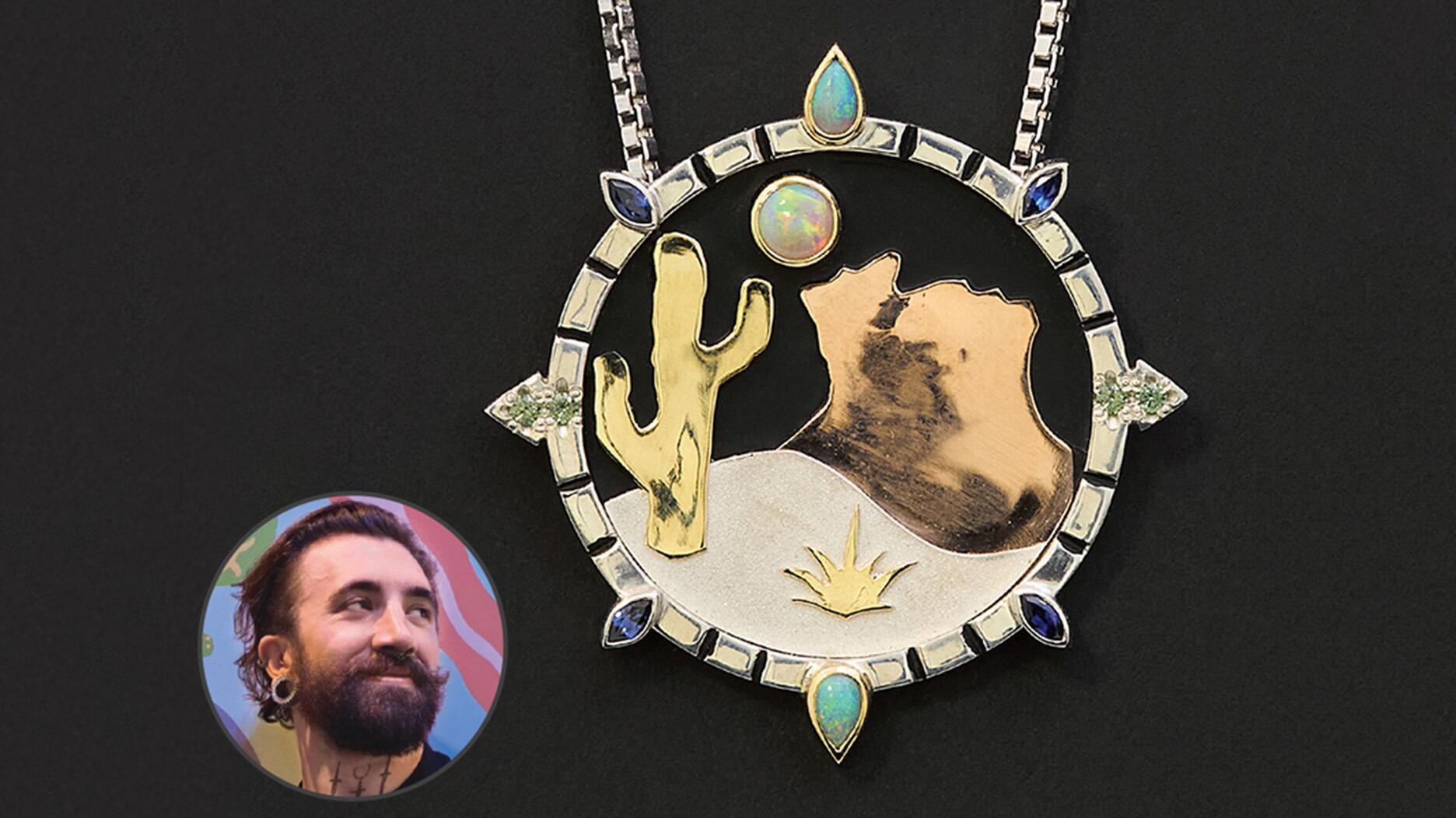Set in a Tiffany & Co. necklace, it sold for $4.2 million, the highest price and price per carat paid for a Paraíba tourmaline at auction.
From JA NY: How to Sell Estate Jewelry
When faced with increasing competition from other retailers, expanding the product mix to include estate pieces can help set a jeweler apart. But how does a traditional jeweler do that? Two experts explain.

New York--When faced with increasing competition from other retailers, expanding the product mix to include estate pieces can help set a jeweler apart. But that’s not as simple as it might sound for traditional jewelry stores.
At a panel at the JA New York Spring show on Monday, Jim Rosenheim of Tiny Jewel Box and Susan Abeles of Bonhams U.S. addressed the challenges of estate jewelry and how retailers can prepare their staff to sell it. The EAB Project’s Elizabeth Anne Bonanno moderated the discussion.
Rosenheim said that “vintage is a complicated kind of business,” adding that it can be a very strong draw for people who are looking to create a unique look and also gives stores margin.
Yet one of the big challenges in the marketplace currently is the fact that there’s so much that looks estate on the market that actually isn’t, including forgeries or misrepresentation.
“Find the right sellers, people whom you can trust. Make sure you have everything in writing,” he said.
One important distinction Rosenheim made is the difference in vocabulary when it comes to signed jewelry. Pieces should read, for example, “By Tiffany” if it’s a real piece but there are instances when verbiage such as “Signed Tiffany” is used.
Abeles reiterated these thoughts, noting that there are “innumerable simulated vintage pieces out there, so it’s a guessing game.”
For this reason, asking all the important questions about a piece before buying is of utmost importance--provenance, how the piece came about, how the dealer/company came into possession of the piece and anything else pertinent to its history.
Retailers also need to have an idea of what type of estate jewelry they want to deal in, what they’ll sell and how they will do that. So education, too, is necessary, Abeles said.
This means not only reading all about the time periods and history behind the periods and eras that the store wants to deal in but also being involved with what’s going on in the trade, attending shows and seminars, and following relevant conversations and sources on social media.
When it comes down to it, retailers should trust their instincts about a piece and pay attention to signs that it might not be authentic.
Abeles also said that a good way that store owners can help both clients and salespeople in the process is by creating “tear sheets” for
When asked if they were finding that younger consumers are drawn to the estate jewelry market, Rosenheim said that they are seeing the interest in the bridal category, particularly engagement rings from the 1920s or 1930s. Abeles too said that younger clients who come to them tend to buy bridal jewelry or basics such as rings, straight line bracelets or ear pendants.
But for clients in their 30s, 40s or 50s, they’re more often buying estate to fit their style.
In fact, customers today are no different in buying estate from the way they buy contemporary jewelry, Rosenheim said; they’re buying jewelry to suit their lifestyles.
If a store has clients who wear big Art Deco pieces, then a store could carry that in its estate collection. But many customers today are more casual in their everyday wear, so a store needs to know its market and choose estate pieces that match its clientele’s buying habits.
In this way, finding the right estate jewelry for clients is very similar to selecting the contemporary lines to carry. It just requires due diligence and research beforehand.
“If you’re going to go into the business, go into it with eyes wide open,” Rosenheim said.
The Latest

The jeweler’s “Deep Freeze” display showcases its iconic jewelry designs frozen in a vintage icebox.

Take luxury gifting to new heights this holiday season with the jeweler’s showstopping 12-carat sphene ring.

How Jewelers of America’s 20 Under 40 are leading to ensure a brighter future for the jewelry industry.

In its annual report, Pinterest noted an increase in searches for brooches, heirloom jewelry, and ‘80s luxury.


Starting Jan. 1, customers can request the service for opal, peridot, and demantoid garnet.

The 111-year-old retailer celebrated the opening of its new location in Salem, New Hampshire, which is its third store in the state.

Roseco’s 704-page catalog showcases new lab-grown diamonds, findings, tools & more—available in print or interactive digital editions.

The new catalog features its most popular chains as well as new styles.

The filmmaker’s personal F.P. Journe “FFC” prototype was the star of Phillips’ recent record-setting watch auction in New York.

The new location in the Design District pays homage to Miami’s Art Deco heritage and its connection to the ocean.

Inflations, tariffs, and politics—including the government shutdown—were among consumers’ top concerns last month.

“Longtime favorite” presenters, as well as first-time speakers, will lead talks and workshops at the annual event in Tucson next year.

The sale of the 31.68-carat, sunset-hued stone was part of Sotheby’s first series of events and auctions in Abu Dhabi.

Most customers who walk into your store this month have made up their minds. Your job is to validate their choice, Emmanuel Raheb writes.

The collection features characters and motifs from Ukrainian folklore, including an enchanted mirror and a magic egg.

MatrixGold 3.11, the newest version of the jewelry design program, offers more flexibility, precision, and creative control.

The pavilion will be part of the 2026 JA New York Spring show, scheduled for March 15 to 17.

Kadet, a 1994 National Jeweler Retailer Hall of Fame inductee, helped grow the family-owned retailer in the Chicago area and beyond.

Billed as the world’s smallest wearable, Lumia Health’s new smart earrings have a health tracker subtly embedded in the back.

Don’t let those with December birthdays feel blue. Help them celebrate their month with blue zircon, turquoise, and tanzanite.

The new pink sapphire version of the piece dances with its wearer in the brand’s “Icons After Dark” holiday campaign.

A choice that’s generated a lot of commentary, Pantone says “Cloud Dancer” marks a fresh start and encourages relaxation and creativity.

The manufacturer’s holiday campaign features a gift guide filled with trending designs and jewelry that can be personalized.

The man was charged with theft, accused of ingesting the necklace while in a jewelry store in Auckland, New Zealand.

The Florida independent expanded its store from 8,000 to 14,000 square feet, fulfilling the vision of its late co-founder, Jim Dunn.

Sponsored by De Beers Group



























